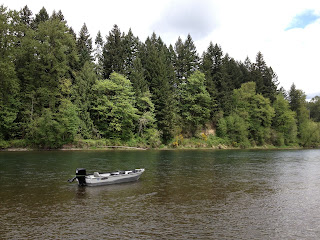Search This Blog
Saturday, May 4, 2013
Clackamas River ODFW Survey and Fish Run Report
Clackamas River: The Clackamas River is one of those rivers where it is possible to catch hatchery salmon and steelhead almost every month of the year. Fishing for winter steelhead will begin to slow down moving into May.
Summer run steelhead will begin to increase in numbers through spring, and based on Willamette Falls counts anglers should prepare for a good return of summer steelhead to the Clackamas. The catch rates for summers were already on the increase the first week of April. The combination of good coho returns to the Clackamas and Willamette system the past couple of years, along with good winter and summer steelhead numbers to date at Willamette Falls, bodes well for anglers fishing the Clackamas from May through November.
Reports of spring chinook in the Clackamas are limited and anglers shouldn’t expect to see these fish in greater numbers until mid to late May depending on water conditions. With chinook passage over Willamette Falls increasing these fish will begin to move in as water in the Willamette slowly warms from the late winter cool down.
Anglers should anticipate a change in how spring chinook move through the lower Clackamas now that the acclimation ponds have been operating for over three years. The Clackamas has three acclimation ponds in the lower river designed to increase sport fishing harvest, and these management tools seem to be working. These sites are located along the Clackamas River and on Eagle Creek with the intention of slowing fish migration and holding the chinook in the lower river longer. The returning Clackamas River fish can be identified by an adipose fin/left maxillary fin clip while the Eagle Creek returners can be identified by an adipose fin/right maxillary fin clip. ODFW biologists welcome any reports of anglers catching these chinook as they continue to evaluate the success of this program.
If you are out on the Clackamas River this spring you might see ODFW crews working a research project on spring chinook, mainly from Barton down to Gladstone. These crews will be doing radio telemetry research on hatchery springers from May through late June. The fish will be caught by hook and line or nets, then tagged and released unharmed. Anglers who happen to catch one of these fish will be able to identify it by the wire tag hanging out of its mouth and all tagged fish must be released unharmed. ODFW would appreciate any information about the catch or the tag; they can call the number found printed on the tag or contact District Biologist Todd Alsbury at 971-673-6011.
Subscribe to:
Post Comments (Atom)


No comments:
Post a Comment